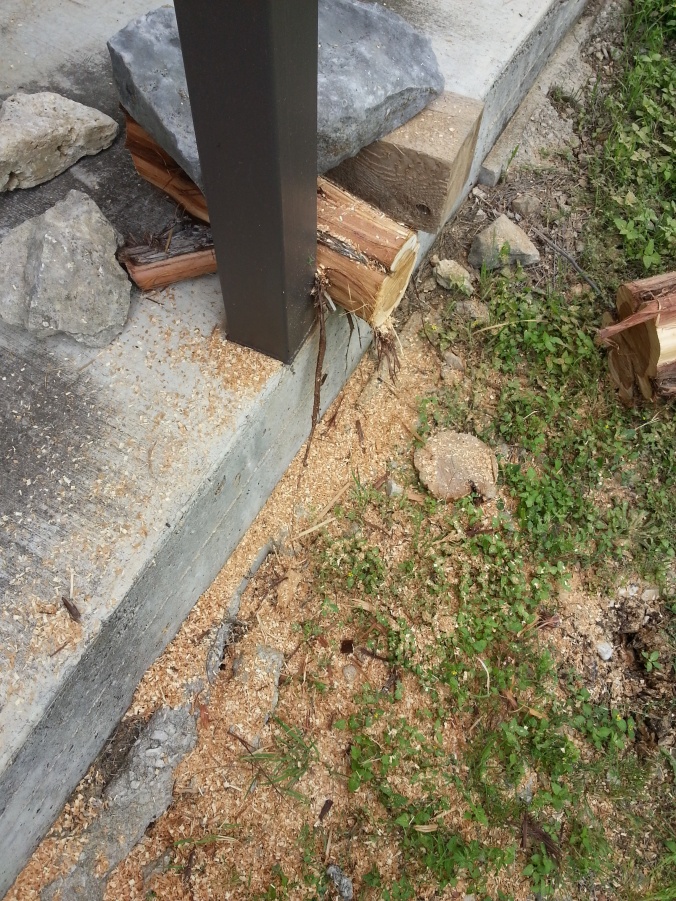Okay, so this idea came out of a similar concept I saw on Reddit a couple weeks ago, but I thought it would look a whole lot cooler if I improved the design a bit (no offense, Reddit guy) and used a cedar log that had a little more character.
Disclaimer: This project was a hell of a lot more labor-intensive than I initially thought. If you’re going to try to build this thing, prepare for a (rewarding) challenge.
Finished product, for those tl;dr folks out there:
The Build:
- The cedar log: natural enemy of Texas allergy sufferers.
- Bark stripped, top and bottom cut with chainsaw.
- Didn’t have a big enough power saw, and the chainsaw wouldn’t make the smooth cuts I wanted.
- I spent an hour cutting these individual cookies by hand. Do. Not. Do. This. Find a big saw, or you will feel it the next day.

Drill three continuous holes through all of your wood pieces. These are where your dowels will (hopefully) fit.

I used two coats of polyurethane, with a light sand in between. My thinking was that the shine would help throw the light better.
- Time to wire.
- Ta-da!

Ran into a bit of a problem with a faulty switch I bought from Home Depot (how could you let me down??), so I took one off a white chord I had on hand and wired it in. Oh well, it’s…unique…?

Inserting the dowels. These were a very tight fit, and I had to sand them down a bit to make it work. The advantage of the tight fit is that I don’t have to use any glue or fasteners for this project.
- Cutting the lampshade paper to size. Shout-out to the Savers in Wheaton, Illinois for the $2 lampshade.
- Getting the right fit.
- Beginning to chisel and (roughly) dremel out an oval recess so the lampshade has a nice place to rest against.
- Thumbs up for safety! I’m not sure what polyurethaned sawdust does to your lungs, but in an unventilated workspace I’d rather not take my chances while using the dremel.
**For those concerned about the potential fire risk of a wooden lamp, I was too. To that end, I used a smaller, cooler-burning CFL bulb and styrene lampshade paper liner. In addition, the paper doesn’t continue through to the bottom, which allows air to reach the bulb and any heat to dissipate. Thanks for reading!
























